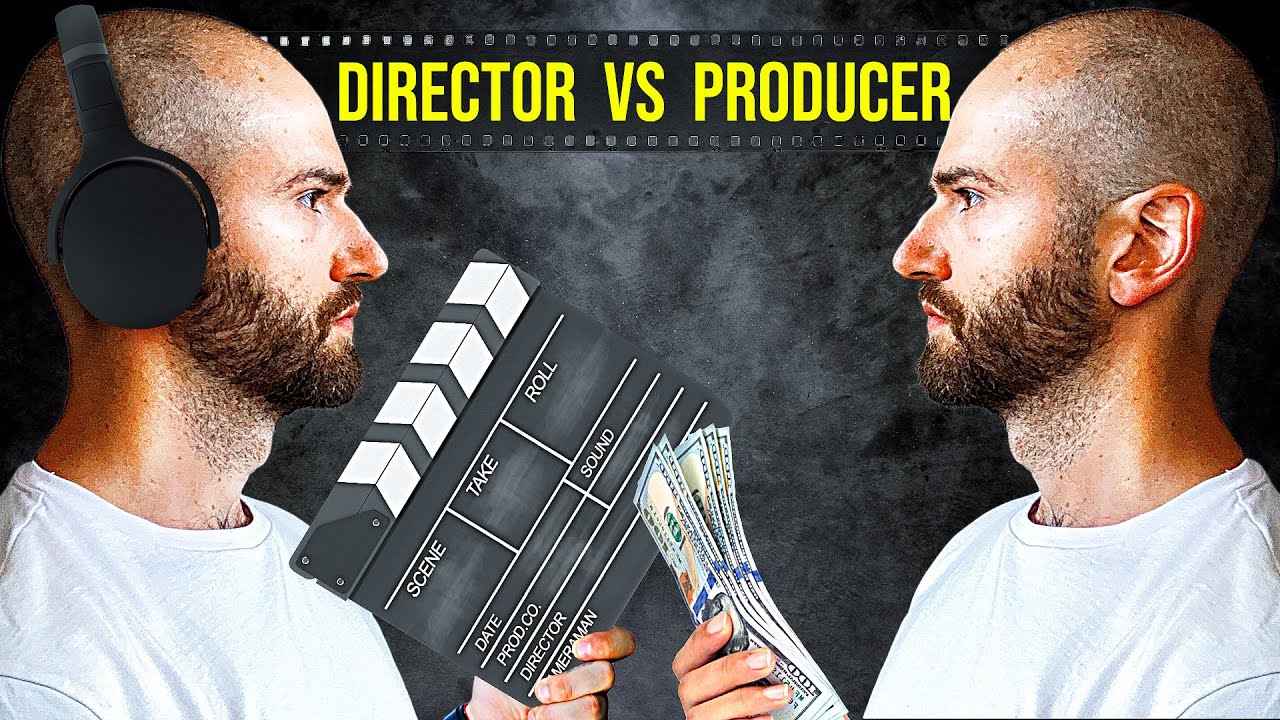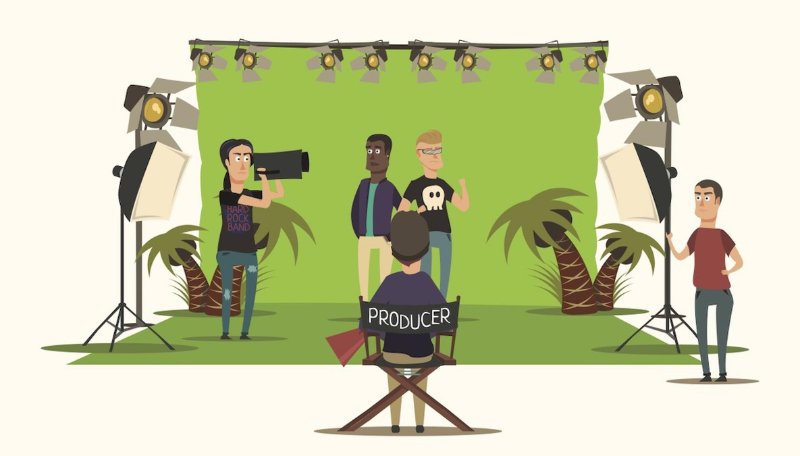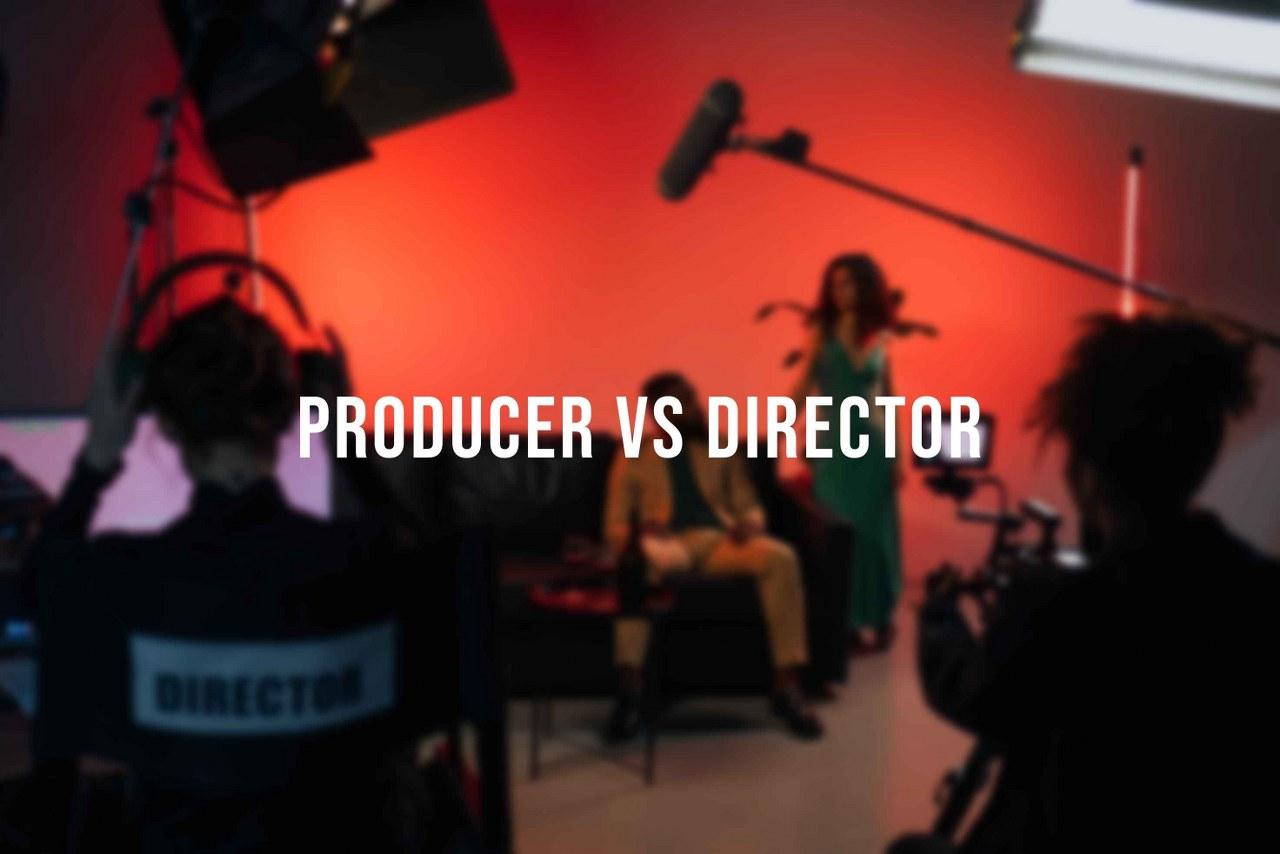Difference Between Director and Producer in Film Production
Difference Between Director and Producer in Film Production: In the dazzling realm of filmmaking, where dreams are woven into visual narratives, two powerhouse figures take centre stage: the producer and the director. Yet each one plays an important role in the cinematic snapshot, although in fruitful ways that alter the production of the final product.
The producer arranges the logistical symphony that’s required to bring artistic visions to life, while the director crafts the film’s artistic vision, the one that moulds the actors and the shots. As we learn the Difference between director and producer in film production we gain a deeper understanding of the work that brings the scripts to life, and the collaboration and magic that happens to make great films.

The Role of the Director
Any film must have a director at its heart, the creative visionary who interprets the script and brings that script to life. This is a multifaceted role that includes many duties serving to provide storytelling and artistic direction to the project itself.

Script Interpretation
An analysis of the screenplay forms the director’s journey. This is where they take a look at the themes, character arcs, and emotional beats that make up the story to have a clear idea of how to put their story visually. Choosing the exact tone, pace and the overall aesthetic of your film is part of it.
Casting
The selection of the right actors or person to play a role is one of the most important parts of a director’s work. They audition, they look at performances, and they pick the actors they think match their vision of a show. Indeed, a director can choose the proper casting when deciding on who to cast for the various roles in the film and thereby can certainly make or break it regarding emotional depth and authenticity.
Guiding Performances
Actors work closely with directors to elicit the best performances. They give us feedback on delivery, emotional range and character development — to ensure that the actors are delivering their role as if it were their own real-life story. It’s a wonderful creative environment where you can get into the full depth of your actors into their character.
Visual Composition
The head of a crew is a director who works with the head of a crew (a cinematographer) to create the look of a film. They determine what goes in a shot and how they are shot, lighting, camera angles and colour palettes. They are choices that add to the film’s total mood and aesthetic, which allow a director to show what story physically.
Post-Production Oversight
After filming, directors are part and parcel of post-production. Editors, work to produce the final cut and make defining choices in terms of what that cut should look like in pacing and sequencing. Additionally, directors may be consulting on sound design and scoring to be sure the film matches their artistic vision.
Important Role of Producer
The producer on the other hand only has his hands on the logistical and financial setting of a film production than the creative focus of the director. The success of our projects is ensured through this role from inception to distribution.

- Project Development: Producers are often involved with the development of a film based on an idea or a script before it becomes bound to the story behind a specific movie. They offer screenwriters suggestions on how to change the story, to make it fit the market and audience needs.
- Planning and Financing: From the creation of the film’s budget to its daily management, a producer is in charge of controlling the budget. They pass on funds that go towards the casting, locations, equipment, and post-production. Producers also need to find financing — negotiating with investors and studios to ensure the project is well-equipped.
- Scheduling: Producers schedule them to keep the project on track. Between different departments, they work together and make sure that all resources are available when they are actually necessary. This planning is so meticulous that it is very likely it will prevent conflicts and delays from creeping in once the film’s shot and art production start.
- Hiring Crew: Assembling the film’s crew, including directors, cinematographers, and production designers, is what Crew Producers are hired to do. They make sure the director’s vision is being well executed by the right talent in place.
- Marketing and Distribution: Producers Once the film is over, producers take care of marketing and distribution. Distributors work with them to make sure the film lands where it’s supposed to and makes as much money as possible. It may include attending film festivals, organizing promotional campaigns and getting distribution deals.
What are the Differences Between Producer and Director?
When you are dealing with filmmaking, it is necessary to understand the Difference Between Director and Producer in Film Production. Each role is integral to the success of the film because they’re creative, and they’re logistically managing the success of the film.

Collaboration vs. Management
Directors work with the cast and crew to create a film and producers simply run the production team. Everyone works towards a common goal and it keeps the project on schedule and coordinated across departments. In this collaboration, we get to know the difference between a director and a producer in film production.
Decision-Making Authority
Directors tend to be able to exercise their power in making decisions more creative. Lastly, they are the ones who choose such things as performances, visual style, and pace. While they take part in creative discussions, producers are always responsible for decisions surrounding the amount of money spent on creating the film, establishing the deadline for its completion, as well as the overall promise the film can make.
Creative vs. Logistical Focus
Among all the other responsibilities that producers and directors share, the focus is the biggest difference between the two. A film’s creative forces: Directors. For producers, the logistical and financial elements are what they concentrate on to see their project to completion. To know the difference between director and producer in film production is very important.
Involvement Timeline
Directing, on the actual shooting of the film, involves a lot more hands-on (ear to ear for some) and making real-time creative decisions. But producers are in play the whole way through with the development, the production, the post-production, and the distribution. It’s important that they still stay on top of them, guide and help them through the obstacles they face, and make changes that are needed.
Skill Sets
To become a director, you need a different skill set from creativity to leadership and know the techniques of film. However, they are going to need to have the ability to inspire, people to act, and to communicate their vision perfectly, or at least think on their feet. On the other hand, producers need to have strong skills such as organizational skills, financial acumen, negotiation skills and project management skills.
What is the Impact on the Final Product?
The success of a film is also not dependent only on the director but also on the producer. The producer manages the logistics of the production, while the director shapes the film’s storytelling and emotional power. The combination of these two roles works so well when they’re in sync that it produces a productive final product that resonates with audiences.
The Power of Collaboration
A relationship between a director and producer is that of collaboration and mutual respect, that is there is no boss and there is no subordinates. While they maintain separate responsibilities, their merger is necessary for acquiring a script and making it into a great film. To achieve success, early communication is key with a shared goal and a commitment to the project’s vision, as Producer vs Director in film.


